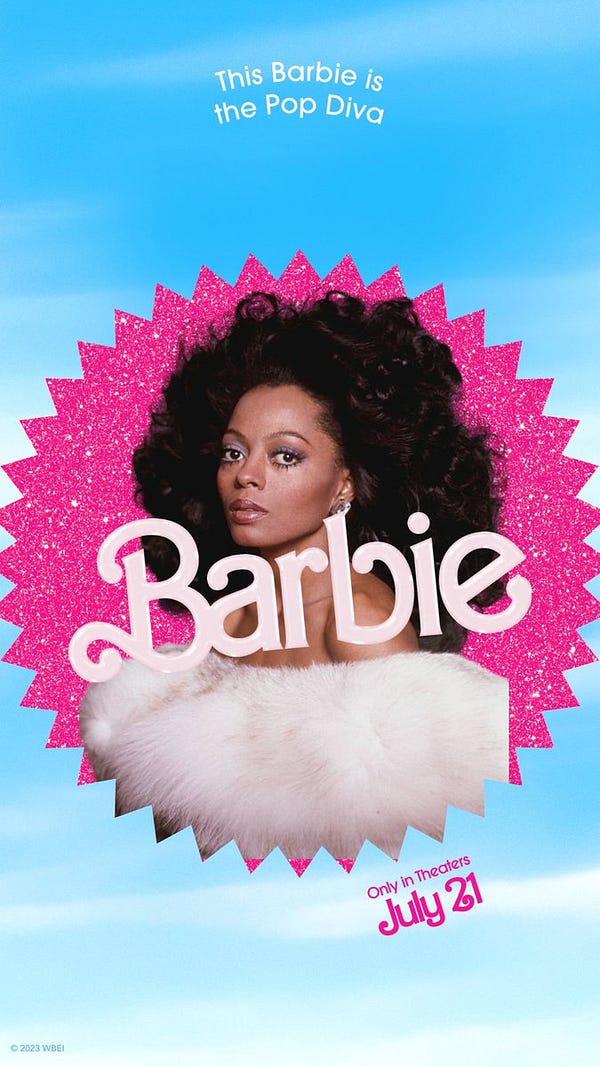Where would we be without our smart phones? (Probably outside enjoying the day, lol). But seriously, it’s crazy to think that it was 50 years ago that the first-ever cellular telephone call was made by a Martin Cooper, a Motorola engineer, from Manhattan, NYC. CNN has a great look-back. I still remember my mom getting one of those brick-like cell phones for work. I personally got my first cell phone at 19, and the only thing it would do is call and text (hello, fellow Gen Xers 👋). Without that first cellular telephone call (and Steve Jobs), I probably wouldn’t be working in social media today. So, thank you, engineers and innovators.
In today’s newsletter:
The Why, What, When and How of Social Media Audits
Lemon8: “As if Instagram and Pinterest Had a Baby”
The Secret to Short-Form Video Success
Put Another Meme on the Barbie
Poll: Getting to Know You
TAKING A CLOSER LOOK
I absolutely love murder mysteries, true crime — anything with a riddle, or where you have to figure out something based on a series of clues. And that might be why I love social media audits so much. Because while the word ‘audit’ doesn’t sound very fun, the process is actually more like trying to solve a mystery.
You’re essentially investigating your accounts, and looking for clues about what is and isn’t working, and where you can find more opportunities for success. And all of this helps you be more strategic, and more efficient, at social media.
So, if I’ve convinced you that this is actually a lot more fun than it sounds, keep reading! (And don’t forget to download the FREE AUDIT TEMPLATE below).
1/4 When to audit
The best time to audit your accounts is either right before you create a social media strategy (so you can see where you’re already having success), or when you’ve implemented your social media strategy for at least six months (to see how your efforts are going, and whether or not you need to pivot).
I do not recommend conducting an audit if you’ve just started to implement your social media strategy, or if you’ve just started an account. It takes a while to build an audience, and it may be demotivating to look at a new account that is still trying to gain traction (just keep experimenting, and be consistent!).
2/4 What to audit
These are the key areas that I recommend you review:
Branding — It’s important to make sure that you’re presenting a unified brand presence across all of your platforms. That includes both visual elements, like consistent logos as profile images, as well as colours and branding in posts, and language used on social media. Essentially, you’re trying to answer the question of: If someone sees my post, do they know it’s me/my company?
Content — It’s a good idea to review the top content across all of your channels. And I recommend looking at each channel individually, because each platform has a different culture, and audience expectation. There’s not point comparing Instagram or Twitter, etc., because you’re actually competing against your own posts on each platform. I suggest looking at both reach and engagement when reviewing top content to give you a full picture of what is really resonating with followers, and non-followers.
Activity — You should also hold yourself to account in terms of your activity on your account. Are you responding to messages and comments in a timely manner? And how often are you posting? Does that posting schedule fit recommendations for that platform?
Audience & Engagement — It’s important to get very familiar with your audience, and you can often find metrics within the platform (Facebook and Instagram both provide metrics on this). You can also glean insights into your audience based on comments they make. For example, I conducted an audit for a private boarding school, and many of the comments on their Instagram posts were from parents who often referred to it as “home away from home.” That’s great insight when creating your own posts.
Other — You’ll also notice a tab for website metrics in the template below. It can be helpful to know which accounts are driving traffic to your website, and the top links they have clicked on. This can again help you better understand your audience, and be more strategic about what you post, and where.
3/4 How to audit
It can feel overwhelming to start collecting all of these metrics, so I’m sharing the audit template that I use. In addition to using this template, I highly recommend taking screenshots of top content, engaging comments, and audience metrics to fill out your report. This will really help create an overall story of where you are seeing success, and who your online community really is, so you can continue to grow that success.
4/4 Next steps
Once you’ve conducted your audit, you can either start creating your social media strategy, or review your current strategy to see whether you’re on track. You might also be wondering about whether to compare yourself to your competition. In my opinion, you’re competing for eyeballs overall, and not always against your direct competitor. But looking at other accounts can be really helpful in providing inspiration. So, be careful not to judge yourself too harshly against your peers, but definitely take inspiration wherever you can!
Happy auditing. And if you need any help, feel free to reach out: hello@thesocialplatypus.com.
🥨 SOCIAL SNACKS 🥨
“As if Instagram and Pinterest had a baby”
That’s how some content creators are describing a new app from TikTok’s parent company, ByteDance. It’s called Lemon8, and unlike TikTok, it does not feature a vertical video feed. It will, however, “use the same recommendation engine that helped TikTok succeed,” according to a report by the NY Times. (The Times obtained a message that was sent to content creators inviting them to join the app). Content is focused on food, beauty, wellness and travel. Lemon8 launched globally in March 2020 and is already at the top of the U.S. app download charts in the lifestyle category.
The Secret to Short-Form Video Success
YouTube recently interviewed 11 Shorts content creators, and here’s what they had to say about their success, including posting cadence, content tips, and results. Here’s a summary:
Posting cadence: Most said they posted once a day
Content tips: Batch content, schedule your posts, repurpose content, focus on titles, analyze your metrics (but don’t let the numbers get you down), express enthusiasm, and have passion for what you’re sharing.
ICYMI
Twitter is now marking Substack links as ‘unsafe’ [The Verge]
Snapchat advises its users not to “share any secrets” with its AI chatbot [ZDNet]
LinkedIn adds algorithmically suggested posts to boost engagement [Social Media Today]
TikTok fined for misusing children’s data [BBC]
Pinterest expands Creator Inclusion Fund to five additional countries [Pinterest Blog]
Research: By more than two-to-one, Americans support U.S. government banning TikTok [Pew Research Center]
PUT ANOTHER MEME ON THE BARBIE
A new trailer for the Barbie movie was just released (the movie comes out in July). But what really caused it to blow up on social media was the release of a Barbie Selfie Generator. Warner Bros. was hoping people would use it to create posters of themselves to share on social media, but it has instead become a Twitter meme. People are creating posters featuring celebrities like Gwyneth Paltrow, characters from shows like The White Lotus, and food like the U.K.’s Cuthbert Cake. Who would you turn into a Barbie meme? The options seem endless.
GETTING TO KNOW YOU
Thank you and welcome to all of my new subscribers! And hello again to my returning readers! I truly appreciate every single subscriber, and hope you are enjoying The Social Platypus. ❤️
I’d love to get to know more about you so I can create content that fits your interests. Feel free to fill out this survey to let me know what your background is.
Thanks again!










